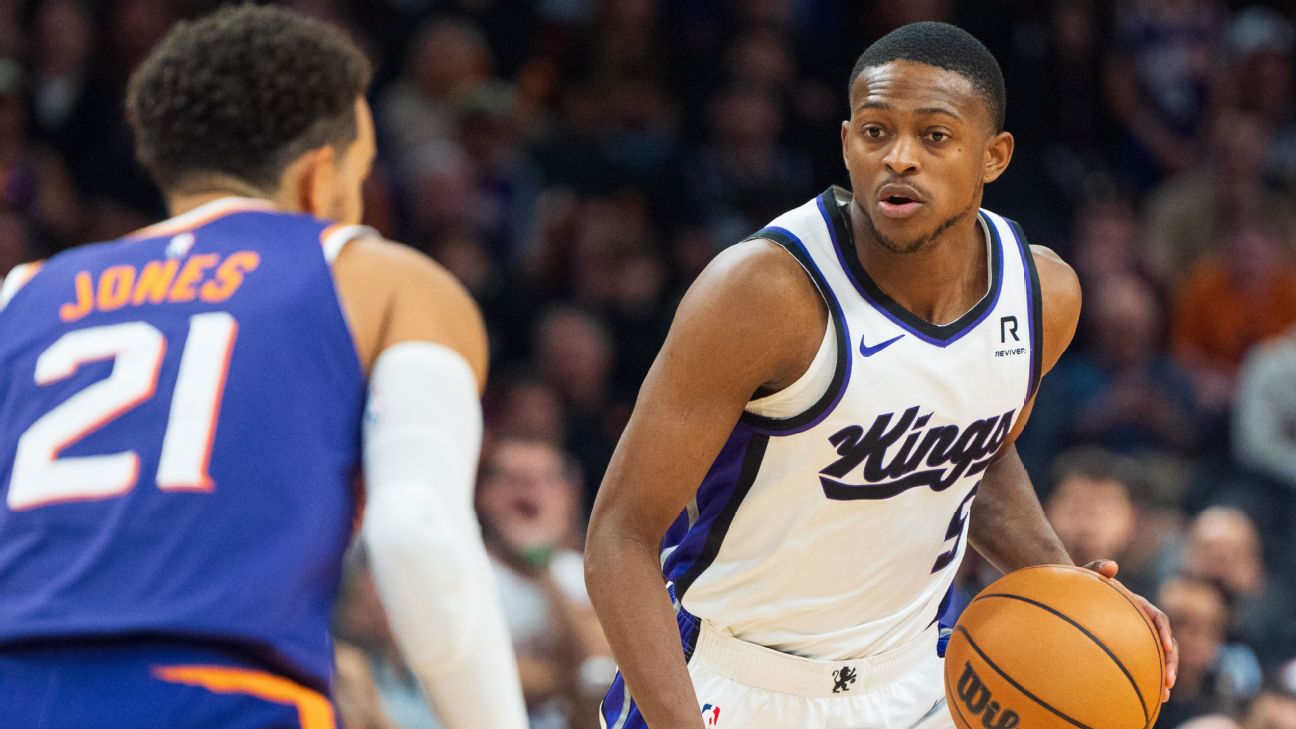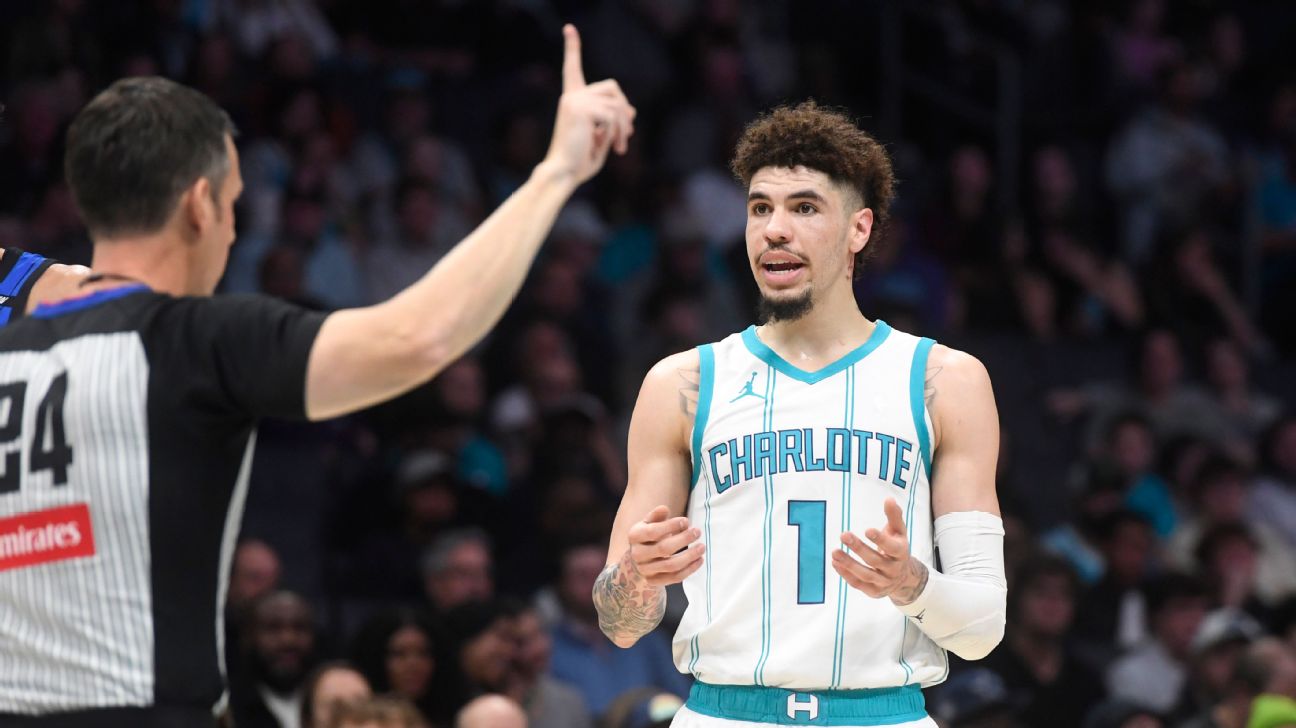Not all “A’s” are created equal.
Over the first month of NBA free agency, which opened on June 30 and has nearly wrapped up in terms of important contributors, I’ve handed out 17 A grades for quality moves big (Paul George moving from the LA Clippers to the Philadelphia 76ers, the first current All-Star to do so in free agency since 2019) and small (the Clippers signing Nicolas Batum back from Philadelphia using their biannual exception).
Because an A is already full points on a 4.0 scale, I don’t award any A+ grades. Still, there are shades of A. To differentiate the best of the best moves made so far in free agency, I’ve ranked all 17 of those As from best to worst based on three criteria:
— The number of other teams which would have made the same move, given the opportunity
— The long-term risk and reward of the contract
— Creativity required to make the move happen
The latter factor is particularly key to this list. The Los Angeles Lakers re-signing LeBron James, or extensions for Donovan Mitchell (Cleveland Cavaliers) and Jayson Tatum (Boston Celtics), are obviously great moves but not necessarily ones that required a lot of strategy. So I’m awarding bonus points for deals like the Sixers signing Caleb Martin and the San Antonio Spurs signing Chris Paul using unlikely incentives to make the best use of their cap space.
With that in mind, let’s look back on the A grades from best to worst.
![]()
Jalen Brunson agrees to four-year extension in New York
-
Agreed to a reported four-year, $156.5 million extension with guard Jalen Brunson
Although it’s not surprising Brunson reportedly agreed to the largest possible extension he could sign with the Knicks, it probably should be given how much money he’s foregoing.
Because Brunson’s current $25 million salary is low for the star player he has become in New York, the maximum raise of 40% puts his starting salary for this extension in 2025-26 at $34.9 million. Based on the projected 10% increase in the salary cap, the maximum salary for players with seven years of experience, like Brunson, will be $46.4 million — $11.5 million more than Brunson will make.
Sure, an extension removes some risk of serious injury this season. Barring that possibility, Brunson was sure to command max offers after finishing fifth in MVP voting during a breakthrough campaign.
As ESPN’s Adrian Wojnarowski pointed out, the length of this extension — four years, with the final one a player option — means Brunson could eventually recoup some of the eye-popping difference between the total value and what he could have guaranteed on a five-year deal as an unrestricted free agent next summer ($269.1 million).
Still, that’s at least three years in which Brunson is giving up a total of about $37 million in salary as compared to a potential max deal next summer. That difference will be crucial as the Knicks’ roster gets more expensive. New York now has $151 million committed to 10 players for 2025-26, pending Julius Randle’s decision on his $29.5 million player option. Brunson taking less could allow the Knicks to give Randle a raise if necessary — or trade him for someone making more money — and still stay comfortably below the second luxury tax apron, which is projected at $208 million.
By 2026-27, when newcomer Mikal Bridges will start a new contract, it might prove difficult for New York to avoid the second apron. By that point, however, the Knicks could be content re-signing or extending the players they’ve already accumulated and having the option to trade those players for ones making less money.
It seems appropriate to term Brunson’s extension a family discount given his dad, Rick, is an assistant coach for New York, a role he previously held under Tom Thibodeau in both Chicago and Minnesota, and team president Leon Rose is Brunson’s godfather. Add in the Villanova “family” that teams Brunson with his former college teammates Donte DiVincenzo, Josh Hart and now Bridges, and it’s clear that Brunson’s connection with the Knicks is unusually strong.
Speaking last week about taking less money to help the Los Angeles Lakers avoid second-apron restrictions, LeBron James compared his relationship with the team to his marriage. But James ultimately sacrificed only a few million, while his offer to take a larger discount in order for the Lakers to add an impact player presumably would have been for only one season.
Add in Brunson’s age and the fact that he hasn’t yet made as much money as superstars who have taken less money later in their careers, such as Tim Duncan and Dirk Nowitzki, and there’s little precedent for this kind of discount. Brunson’s willingness to take less money than he could have made in free agency might ultimately prove a key factor in New York’s ability to chase an NBA championship.
![]()
Caleb Martin lands with Philadelphia
-
Agreed to a reported four-year, $32 million contract with forward Caleb Martin
Martin fills a key need for the 76ers, whose depth was troublingly thin at power forward after incumbents Tobias Harris and Nicolas Batum agreed to sign elsewhere in free agency once Philadelphia used the bulk of its cap space to add Paul George.
Enter Martin, who actually projects as the second-shortest member of the Sixers’ likely starting five at 6-foot-5 but has extensive playoff experience guarding bigger opponents during his three seasons with the Paul George
Consider George’s arrival and departure from the Clippers to be bookends in an era marked by relatively little movement of stars in free agency, with trades instead becoming their most common method of changing teams.
Over the four offseasons since George was traded to the Clippers to join Kelly Oubre Jr. to a contract that can use their $8 million room exception. With George on the books at the max, starting at $49.2 million this season, that leaves about $9 million for Philadelphia to finish shopping in free agency and a depth chart currently devoid of power forwards.
Even if the Sixers split their remaining money between a couple of players, they’re looking at filling out the roster with at least six players making the veterans minimum. The lure of playing alongside Embiid, George and Maxey should help Philadelphia recruit some of the best players willing to play for the minimum, but we’ve seen with the Los Angeles Lakers after the Russell Westbrook trade and the Derrick Jones Jr., the Clippers signed Batum using their $4.7 million biannual exception. He likely slots in as the backup to Kawhi Leonard, with the ability to earn a larger role depending on how coach Tyronn Lue’s wing rotation shakes out.
Adding Batum pushes the Clippers ever so slightly over the luxury tax line with 14 players under contract. Trading Russell Westbrook and replacing him with a player at the veterans minimum would get the Clippers out of the tax to start the season.
Bey agrees to 3-year deal with Washington
-
Agreed to a reported three-year, $20 million deal with forward Derrick Jones Jr., Caleb Martin and Naji Marshall all signing deals for less than the value of the non-taxpayer midlevel exception despite their utility to winning teams.
Given those factors, Bey never had a realistic chance of commanding eight figures per season. His former team, the Atlanta Hawks, declined to tender him a qualifying offer because of its luxury tax issues, allowing him to become an unrestricted free agent.
Enter the Wizards, who have the ability to think beyond the upcoming campaign in the midst of a rebuild. Even if Bey provides no value at all to Washington in 2024-25, a two-year, $20 million deal would be reasonable next summer for a player with 223 career starts — more than any of Jones (163), Martin (88) or Marshall (36) — for his prime age-27 and age-28 seasons.
Washington is certainly taking a risk here in hopes that Bey will return to full health, as well as the possibility of him shooting more like his career 3-point accuracy (35%) rather than last season’s career-low 32% mark. Bey’s shooting backslide after hitting 38% of his 3s as a rookie is difficult to understand considering he remains an above-average foul shooter (84% in 2023-24, matching his career mark). Still, Bey has the upside of providing starter-caliber minutes at either forward spot at 6-foot-7, filling an important need for contending teams.
By 2025-26, it’s possible the Wizards will transition to a new phase of their rebuilding process with more focus on results after adding a lottery pick next June. Alternatively, if Washington is still playing the long game next summer, Bey could hold trade value on this contract as the cap rises. Either way, this is one of my favorite signings of the offseason.



